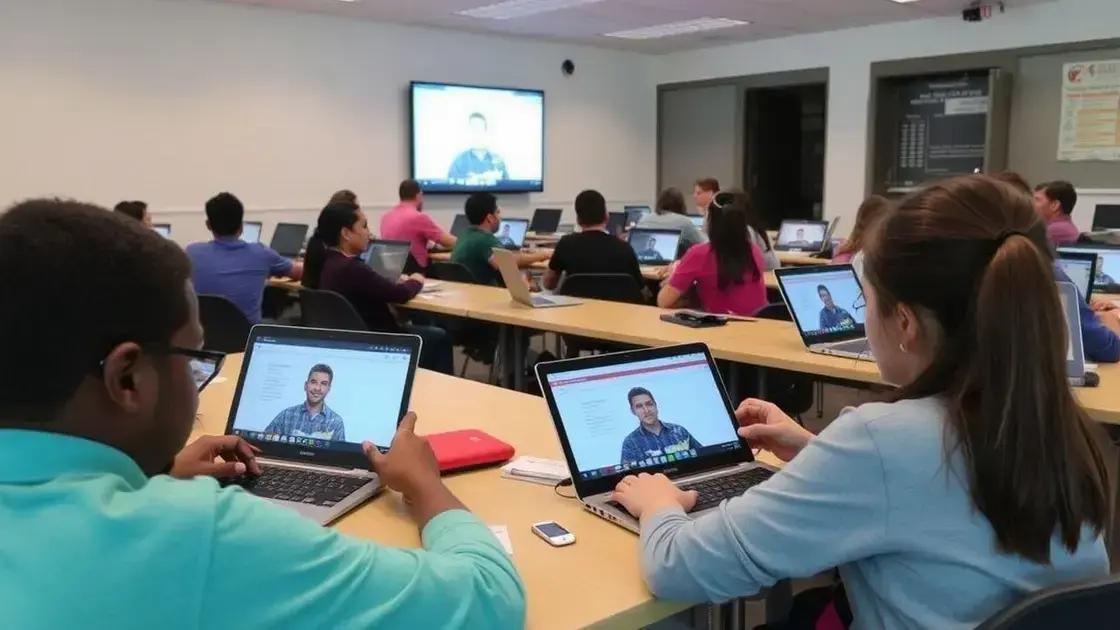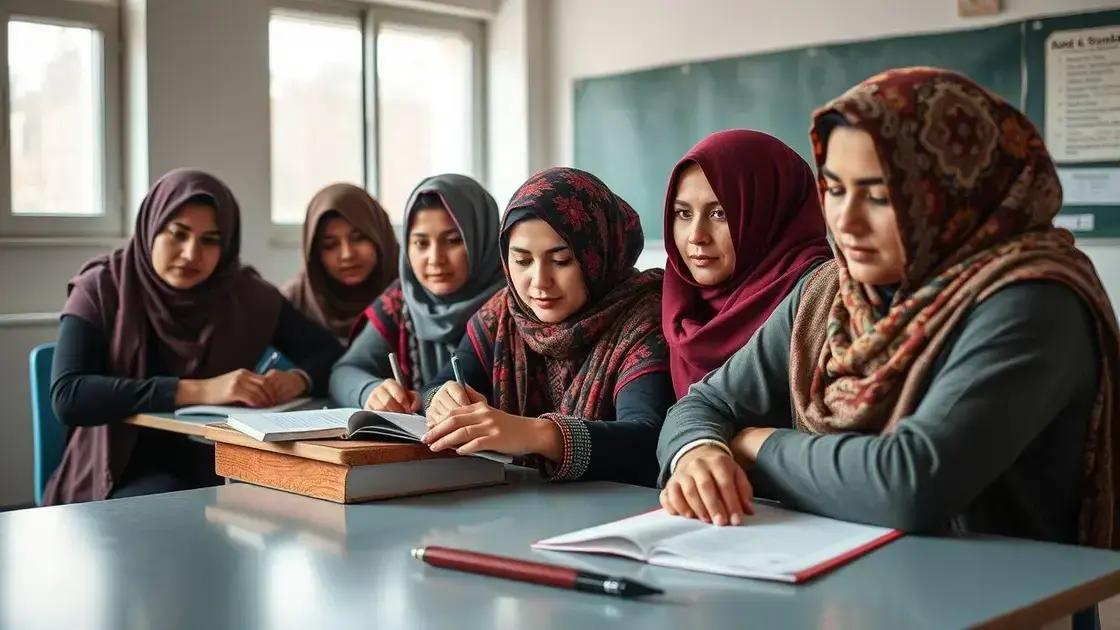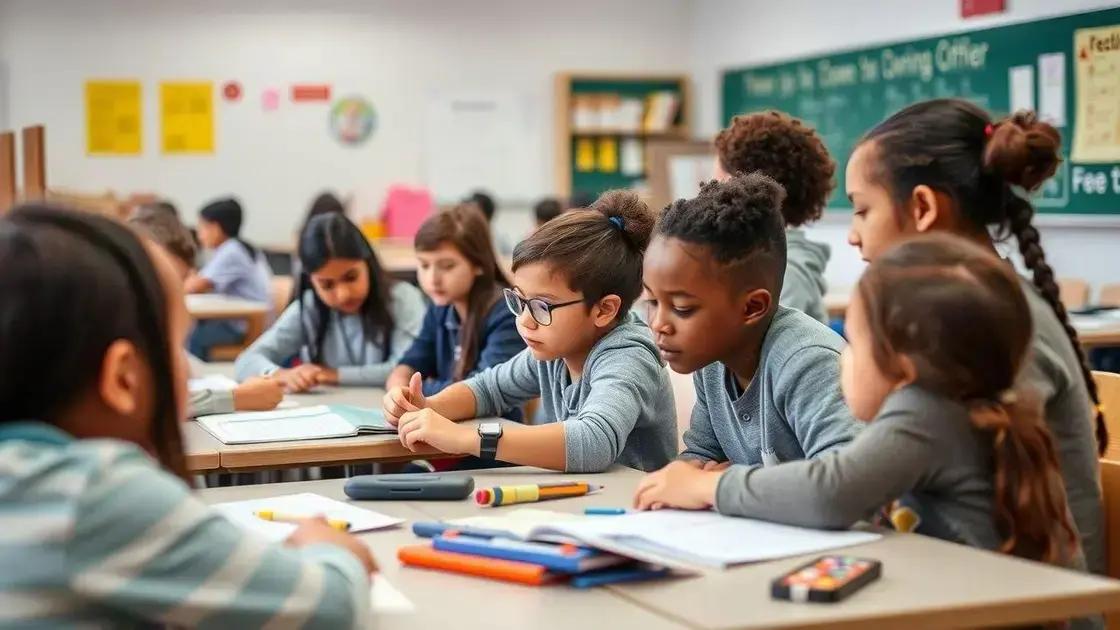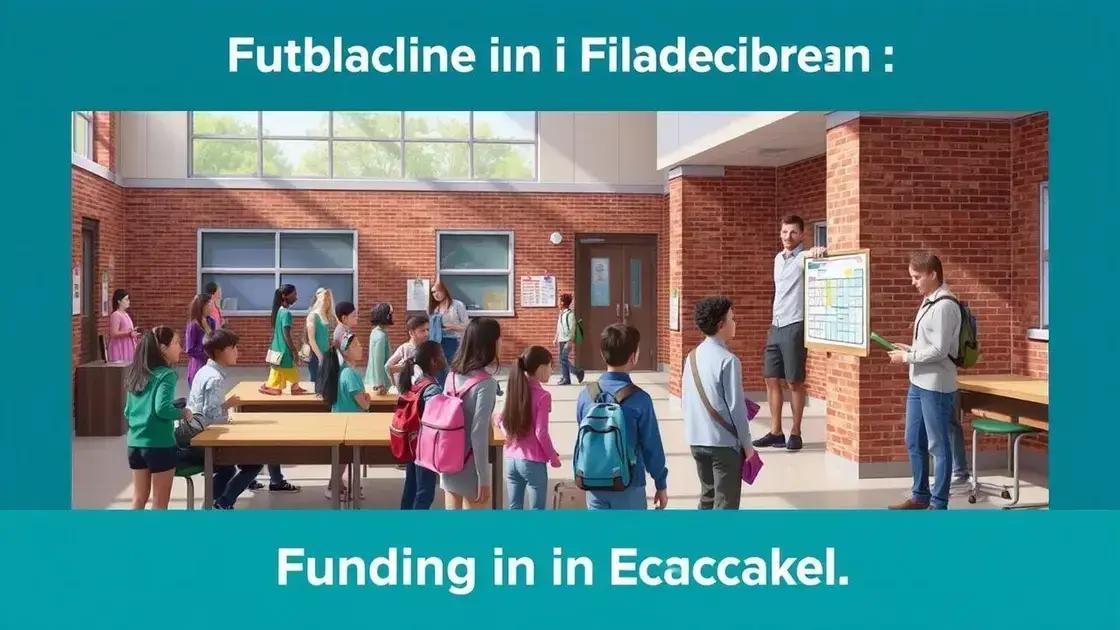Remote learning: unlocking new opportunities for students

Remote learning provides flexibility, increased access to resources, and the opportunity for personalized education through advanced technologies, though it also presents challenges like isolation and reliance on technology.
Remote learning has become a game-changer, enabling education to reach students from anywhere. Have you ever wondered how this shift impacts learning opportunities and outcomes? Let’s dive deeper into its transformative effects.
What is remote learning?
Remote learning is a method of education where students and instructors engage from different locations, often using technology. It provides a way for students to learn from home or any location they choose, while still accessing quality educational resources. This approach has gained immense popularity, especially when traditional classroom settings were not available.
Understanding Remote Learning
At its core, remote learning involves online classes, video conferences, and digital assignments. This style of learning allows flexibility for students, enabling them to manage their study schedules around other commitments. With the rise of the internet, educational resources have become more accessible to everyone, regardless of their location.
How Remote Learning Works
Typically, students attend virtual classes through video calls and participate in discussions just like in a physical classroom. They submit assignments via online platforms where teachers can provide feedback. This system promotes interactive learning, where students can engage more actively compared to traditional settings.
- Access to a wide range of resources.
- Opportunity to learn at one’s own pace.
- Flexibility in balancing studies and other responsibilities.
- Ability to connect with educators and peers worldwide.
Technology plays a crucial role in making remote learning effective. Platforms like Google Classroom, Zoom, and Microsoft Teams enable seamless interaction between educators and students. This integration of technology enhances the overall learning experience, making it richer and more engaging.
The Importance of Communication
Communication is key in remote learning, as it helps maintain connection and interaction among students and teachers. Regular check-ins, group discussions, and feedback sessions encourage collaboration, which is vital for effective learning. By fostering open lines of communication, educators can better support students, guiding them toward academic success.
Benefits of remote learning for students
The benefits of remote learning for students are significant and profound. This educational model has transformed the way learning occurs, providing greater flexibility and opportunities for personal growth.
Benefits of Flexibility
One of the greatest advantages of remote learning is its flexibility. Students can learn from virtually anywhere, whether they are at home or traveling. This type of learning allows students to create schedules that suit their needs, which can be particularly helpful for those balancing work and education. Being able to learn at one’s own pace can lead to a deeper understanding of the material.
- Access to educational content at any time.
- Ability to study in a comfortable environment.
- Reduced commuting time.
- Customized learning schedules.
Another key benefit is the wide array of resources available online. Students can access courses, videos, and articles from a variety of sources, enriching their learning experience. This abundance of information helps students explore topics in-depth, fostering a more engaging learning process.
Increased Engagement
Remote learning also promotes innovative teaching methods that can enhance student engagement. Teachers use interactive tools, such as quizzes, group discussions, and multimedia presentations. These methods keep students interested and involved in their own education. Collaboration and interaction among peers become essential components of the learning experience, encouraging teamwork and communication skills.
Moreover, remote learning can help develop essential skills that are valuable for future careers. These skills include time management, self-discipline, and digital literacy. Mastering these abilities through remote learning prepares students for the demands of the modern workplace.
Tips for effective remote learning

Effective remote learning requires strategic planning and discipline. Following some key tips can significantly enhance the learning experience, helping students succeed in this environment.
Set a Dedicated Study Space
Creating a specific area for studying is crucial. This space should be comfortable, quiet, and free from distractions. Having a designated area helps signal your brain that it’s time to focus on learning.
- Choose a well-lit area.
- Keep your study materials organized.
- Limit distractions like noise and electronics.
In addition to a study space, establishing a consistent schedule can make a big difference. Students should set clear times for classes, breaks, and study sessions. A routine helps maintain a balanced approach to learning.
Engage with Your Learning Materials
Being active in your learning is essential for retention. Instead of passively listening to lectures, take notes, ask questions, and participate in discussions. Interactive learning keeps students engaged and promotes a deeper understanding of the subject matter.
Using various tools and resources also enhances learning. Online platforms often provide quizzes, videos, and interactive assignments that cater to different learning styles. Embracing these tools can make learning more enjoyable and effective.
Stay Connected with Peers and Instructors
Maintaining communication is vital in a remote learning environment. Students should reach out to classmates and teachers regularly for support and collaboration. Forming study groups or discussion forums can provide a sense of community and motivation.
Technology enables easy connections, so using chat apps, forums, or video calls can foster relationships that enhance the learning experience. Regular check-ins with instructors also ensure that students receive guidance and feedback.
Challenges of remote learning and how to overcome them
Remote learning presents several challenges that can affect student success. Identifying these challenges is the first step in overcoming them effectively.
Common Challenges
One major challenge is the lack of face-to-face interaction. Students may feel isolated and miss the social aspect of learning in a classroom setting. This lack of connection can lead to feelings of loneliness and disengagement from the learning process.
- Difficulty in staying motivated.
- Limited opportunities for collaboration.
- Feeling of disconnection from peers and instructors.
Another significant issue is the reliance on technology. Technical problems such as poor internet connection or malfunctioning devices can hinder learning. Inconsistent access to technology can create unequal learning opportunities for students.
Strategies to Overcome Challenges
To combat isolation, students can engage in virtual group activities or study sessions. Participating in online discussions and forums can help foster connections with classmates. Building relationships in remote learning is key to maintaining motivation and a sense of belonging.
To address technology-related issues, schools can provide resources to help students gain access to devices and connectivity. This could include lending laptops or offering support for setting up internet access. Partnering with local organizations can also help bridge the technological gap.
Lastly, time management can be a challenge for many students in remote learning environments. Without structure, it’s easy to lose track of time or procrastinate. Creating a daily schedule that outlines study times, breaks, and class periods helps maintain focus and productivity.
The future of remote learning in education
The future of remote learning in education looks promising and full of potential. As technology advances, educational methodologies are evolving, paving the way for innovative approaches to teaching and learning.
Integration of Advanced Technologies
One significant change we can expect is the increased integration of advanced technologies. Tools like artificial intelligence and virtual reality will likely play a larger role in the classroom. For example, AI can personalize learning, adapting content to fit each student’s needs, while virtual reality can offer immersive experiences that bring subjects to life.
- Using AI for personalized learning plans.
- Incorporating virtual reality for engaging simulations.
- Utilizing analytics to track student performance.
Additionally, more interactive platforms will emerge, making remote learning more engaging. These platforms will facilitate collaboration among students and teachers, ensuring that learning remains dynamic and interactive. Innovation in online education aims to replicate the collaborative classroom experience as much as possible.
Greater Accessibility
The future will also bring increased accessibility to education for all students. Remote learning allows anyone with internet access to participate in courses from anywhere in the world. This opens doors for students who may have previously faced barriers, such as geographical location or other circumstances that hinder in-person learning.
As educational institutions continue to embrace remote distance learning, they are likely to develop more flexible policies that support diverse learning needs. This flexibility can create a more inclusive environment and improve educational outcomes for everyone.
Preparing for a Hybrid Model
Many schools are moving toward a hybrid model, combining both in-person and remote learning. This approach allows for a more versatile educational experience. Students can benefit from face-to-face interactions while also enjoying the flexibility of online learning. This blend may become the standard in education, as it caters to different learning styles and preferences.
In summary, the future of remote learning in education holds exciting opportunities. From advanced technology integration to greater accessibility, teachers and students can look forward to a more enriched learning environment that meets their diverse needs.
The future of remote learning is filled with opportunities for both students and educators. With technological advancements, learning will become more personalized and engaging. Schools are shifting towards hybrid models, allowing flexibility in education. As we adapt to this new environment, it’s essential to embrace these changes, ensuring everyone can access quality education. Let’s look forward to a future where learning knows no bounds! 🌟
FAQ – Frequently Asked Questions about the Future of Remote Learning
What are the main benefits of remote learning for students?
Remote learning offers flexibility, access to diverse resources, and the ability to learn at one’s own pace, enhancing educational opportunities.
How will technology impact the future of remote learning?
Technology will integrate advanced tools like AI and VR, making learning more interactive and engaging while personalizing education for each student.
What challenges do students face in remote learning environments?
Students often experience issues such as isolation, motivation difficulties, and reliance on technology, which can hinder their learning experience.
How can schools support students in a remote learning setting?
Schools can provide resources, foster communication, and create online communities to enhance student engagement and address individual learning needs.






